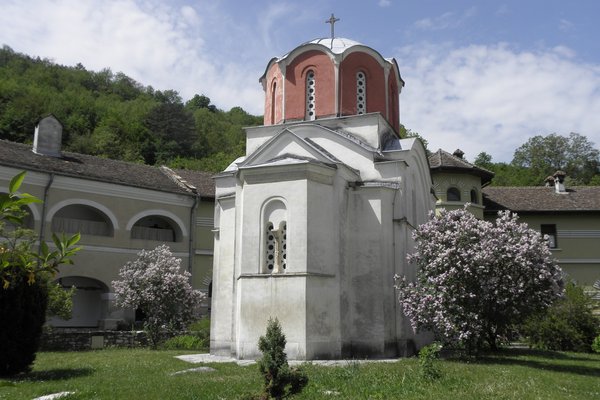Serbia
Studenica Monastery
Studenica Monastery is one of the largest and richest Serbian Orthodox monasteries, best known for its collection of 13th- and 14th-century Byzantine-style frescoes.
Its typical Rascian architectural style has a mix of Romanesque and Byzantine elements. Its fortified walls encompass three churches, made out of marble. The monastery was the cultural and spiritual centre of medieval Serbia and holds the remains of its earliest rulers. It produced the Studenica Typicon, the first book of literature in Serbian.
Community Perspective: “The best Serbia has to offer with beautiful highlights both on its exterior and inside with its great collection of frescoes”. It can be reached by public transport, as described by Nan.
Site Info
Official Information
- Full Name
- Studenica Monastery (ID: 389)
- Country
- Serbia
- Status
-
Inscribed 1986
Site history
History of Studenica Monastery
- 1986: Inscribed
- Inscribed
- Type
- Cultural
- Criteria
- i
- ii
- iv
- vi
Links
- UNESCO
- whc.unesco.org
- Official
-
- manastirstudenica.rs — Studenica Monastery
- Related
-
- de.wikipedia.org — Serbisch-byzantinischer Stil
- rs.risjak.net — Link
All Links
UNESCO.org
- whc.unesco.org — whc.unesco.org/
Official Website
- manastirstudenica.rs — Studenica Monastery
Related Resources
- de.wikipedia.org — Serbisch-byzantinischer Stil
- rs.risjak.net — Link
Community Information
- Community Category
- Religious structure: Christian
Travel Information
Recent Connections
View all (14) .Connections of Studenica Monastery
- Geography
- Trivia
- History
-
-
Byzantine Empire and Civilization
priceless collections of 13th- and 14th-century Byzantine paintings (OUV)
-
- Architecture
-
-
Romanesque
Romanesque sculptors responsible for the west and south gates and the great east window (AB ev)
-
- World Heritage Process
-
-
Perfect Inscriptions
1986
-
- Human Activity
- Constructions
-
-
Freestanding Bell Tower
On the western side of the monastery complex there is a bell tower, erected in the 13th century (wiki) -
Dynastic Burial Places
Contains the remains of the first Serbian kings
-
- WHS on Other Lists
-
-
World Biosphere Reserves
Golija-Studenica (2001) -
U.S. Ambassadors Fund
Conservation of Medieval Wall Paintings in Studenica Monastery (2008)
-
- Timeline
-
-
Built in the 12th century
Built in 1183, though the earliest murals date from the 13th century (AB ev))
-
- Visiting conditions
- WHS Names
-
-
Named after a River
Named after the nearby Studenica river
-
- Literature & Film
-
-
Literature
This is where St. Sava Nemanjic, ..., wrote the first literary work in the Serbian language (crit vi)
-
News
No news.
Recent Visitors
Visitors of Studenica Monastery
- Alberto Rodriguez Gutierrez
- Alexander Barabanov
- Alexander Lehmann
- alicemears
- Aljaz
- Andrew_Kerr
- Anna Wludarska
- Argo
- Aspasia
- Atila Ege
- BaziFettehenne
- Bin
- Bruno_Pires
- Christravelblog
- Cirene Moraes
- Clyde
- Csaba Nováczky
- Dagmara
- del
- Dimitar Krastev
- Els Slots
- Erik Jelinek
- Eva Kisgyorgy
- Evgenii
- Fan Yibo
- Femke Roos
- Filip Murlak
- FS
- GeorgeIng61
- Gernot
- Grzegorz Andruszkiewicz
- Harry Mitsidis
- Iain Jackson
- Ivan Rucek
- Jacob Choi
- Jarek Pokrzywnicki
- Jasam
- Javier
- Jeffrey Chai
- Jezza
- John Smaranda
- Jonas Kremer
- Juha Sjoeblom
- KarenBMoore
- Knut
- La Concy
- Lara Adler
- lichia
- Lisu Marian
- Luis Filipe Gaspar
- Maciej Gil
- Martin
- Martina Rúčková
- MaYumin
- Michael Novins
- Michael Turtle
- Mikko
- Milan Jirasek
- Miloš Tašković
- nan
- Nihal Ege
- nikolamus
- Patrik
- Paul Schofield
- Philipp Leu
- Philipp Peterer
- Rafał Kałczuga
- Randi Thomsen
- Roger Ourset
- Roman Bruehwiler
- Roman Raab
- Sergio Arjona
- Slavi
- Solivagant
- Stanislaw Warwas
- Svein Elias
- Szucs Tamas
- Taotao Chen
- Tarquinio_Superbo
- Tevity
- Thomas Buechler
- Thomas van der Walt
- Timothy C Easton
- triath
- Tsunami
- Twobaconsandaboston
- WalGra
- Walter
- Westwards
- Wo_ko
- Xiong Wei
- YaroMir
- Yevhen Ivanovych
- Zach
- Zoë Sheng
- Александар Стојиљковић
Community Reviews
Show full reviews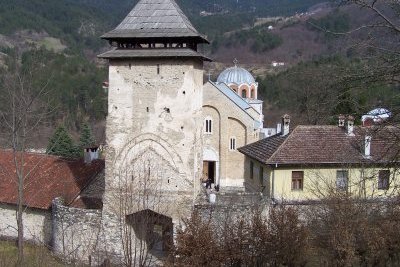
Studenica Monastery is one of the WHS that means much more to the people of the nation where it resides than it does to outsiders. I went there with my Serbian friends while staying with them and it's a bit of trek to get to being somewhat buried in the Dinaric Alps.The reason that the Serbian people revere this monastery is because it was founded by Stefan Nemanja, the founder of the medieval Serbian nation. It's an important site for Serbian people and that is very apparent when you're there.The actual monastery comprises of the original Byzantine church and it's later extension plus some monastic buildings. There are important frescoes inside the church that have been sadly damaged during restoration work, this was the case when I visited in 2009, maybe they have been restored now.I found it funny that an old monk said something to me in Serbian which made my friend laugh. I asked later what he had said and she said, "I wish you safe travels on your journey, unless you don't believe in God, then I don't care". Charming!
Keep reading 0 comments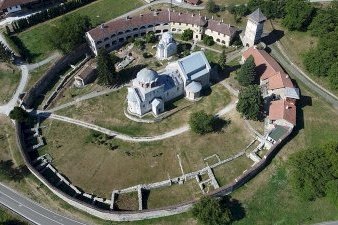
I visited this WHS in 2022 visiting en route the uninscribed Zica monastery. The latter monastery is red no more, at least at the time of visit, but it still looks good without paint both outside and inside. Likewise, Studenica Monastery's red painted dome had its paint removed, but this seemed quite temporary as I noticed a number of buckets of red paint on the side.
The Studenica Monastery was built between 1186 and 1196 in a once desolate region, on the fertile slopes of the Radocelo mountain. Its founder, Grand Prince Stefan Nemanja, could be compared to Noah from the Old Testament, because with Studenica Nemanja created also the ship of salvation by which he brought his people to the Lord, as glorified in the hymns of praise echoing inside the monastery. Stefan Nemanja abdicated in 1196, took the monastic vows and a new name, Simeon. He is represented really well on the south wall of the church, as a monk with the Studenica church in his hand, a recurring theme I had also noted at the Zica Monastery and at the Gracanica Monastery in Kosovo. The crown on Stefan Nemanja's head reminds believers that he left the earthly treasures of fame, power and wealth, for the skae of a modest monastic life and in that way he became an unrivaled model for his descendants.
Stefan Nemanja built the gorgeous church of Studenica remembering his former imprisonment in Constantinople, and dedicated it to the Virgin Benefactress. Excellent …
Keep reading 0 comments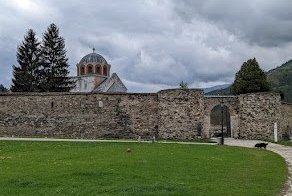
Located in a rural and remote corner of Serbia, Studenica Monastery is the nicest Serbian Orthodox monastery and church I visited while in Serbia. It is a fortified monastery, with walls and a tower, that reminded me of the churches in Romania. And it has great murals and a good state of preservation, probably owed to the remoteness. I think the consistency was the part that impressed me the most.
Getting There
You can get to Studenica from both Kraljevo and Novi Pazar. Take a bus between the two and get off at Usce. From Usce, there are a few daily connections to Miliće which stop in Studenica. The connection is timed to match the bus from Kraljevo. Details are found here. You should check with the bus driver regarding return times. There was ample time for the visit and having a sandwich before jumping the bus back.
I came in the morning by bus from Kraljevo and left in the afternoon for Novi Pazar. My original plan had been to catch a cab to the monastery, but Usce doesn't have cabs. I had already started a 2h hike when I saw a bus behind me heading the proper direction.
On my return to Usce via the same bus, I caught the bus to Novi Pazar. Note: Usce has an "official" bus terminal, but some buses stop along the road, 20m off the bus terminal.
While You Are There
Novi Pazar and Stari …
Keep reading 0 comments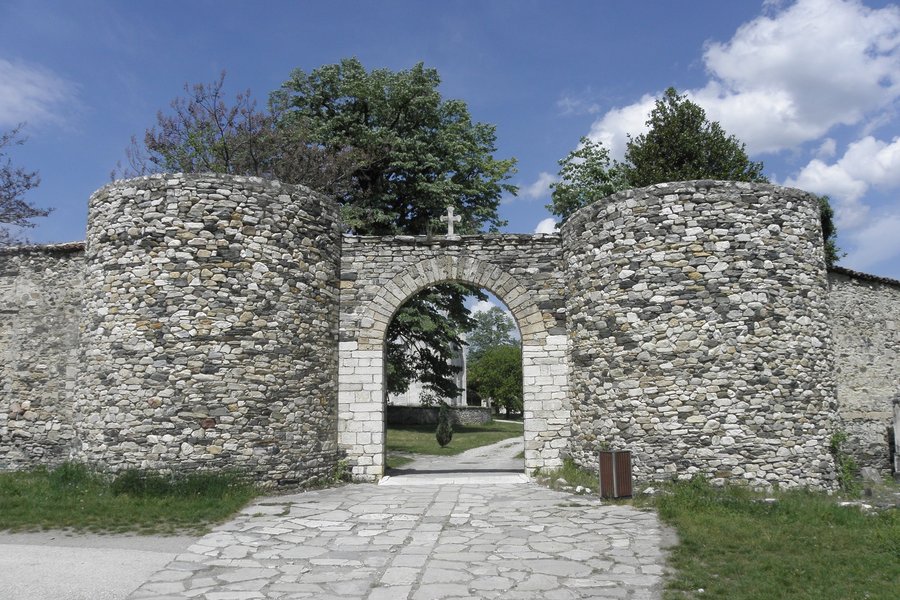
When you get to the place called Ušće, you take a right turn from the main road and after 11 km, you are there. There is a bus line from Ušće to Studenica and back, but it doesnt go so often. I walked from monastery back, but it wasnt so good idea, because there is now light where the road goes, only forests and mountains. I recommend to go by stop, there will be always someone from locals driving that way. Monastery is very important for Serbian history, founded by the Stefan Nemanja, first ruler of Serbia. In monastery you can see remains of Stefan Nemanja, his wife Ana and their middle son Stefan, who was the first king of Serbia.
Keep reading 0 comments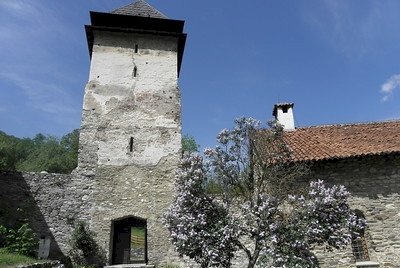
Despite its prominent place in Serbian history, the Studenica Monastery nowadays is a simple and quiet place. I drove there from Vrnjacka Banja (a spa town near Kraljevo), stopping on my way at the rather grand Zica Monastery. Well, at least they have a car park that is made for hundreds of visitors. And its bright red colour (after Mount Athos) draws attention from afar.
None of that awaits at Studenica. It's a little more remote, uphill on a winding road through the pretty mountains that also are a Unesco Biosphere Reserve. I ended up at the backside of the monastery, where I took the last parking spot among 8 or so. The monastery is fully surrounded by a stone wall, including a tower and two gates.
The inner area of the monastic complex is quite small. Around the edges lie the rooms that are in use by the current monks - this is an active monastery. I visited on Sunday, May 5th, which happened to be Easter Sunday in the Julian Calendar which is used by the Serbian-Orthodox Church. The Serbian visitors were dressed in their Sunday best, and two families had their little babies baptized in the Church of the King by a bearded priest clothed in black.
The larger church (Church of the Virgin) has a pretty typical Rascian design, a mix of white marble and a romanesque front combined with Byzantine murals inside. Unfortunately, photography is not allowed inside, so I cannot show …
Keep reading 0 comments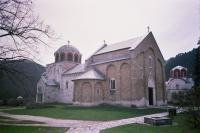
Studenica Monastery is a huge complex including several churches, being the main one dedicated to the Presentation of the Holy Virgin. Besides this one there is another church dedicated to Saints Joachim and Anne, a small church dedicated to Saint Nicholas with beautiful frescoes inside and the foundations of another church dedicated to Saint John the Baptist.
In order to get the Monastery you should leave from Belgrade heading for the town of Nis and taking a secondary road that is crossing the towns of Kragujevac and Kraljevo. In a short distance from Studenica there are some other monasteries such as Zica and Sopocani, being this last one a World Heritage Site as well.
If you are fond of orthodox churches, as for sure I am, this is definitely a place that you will enjoy.
Keep reading 0 comments
